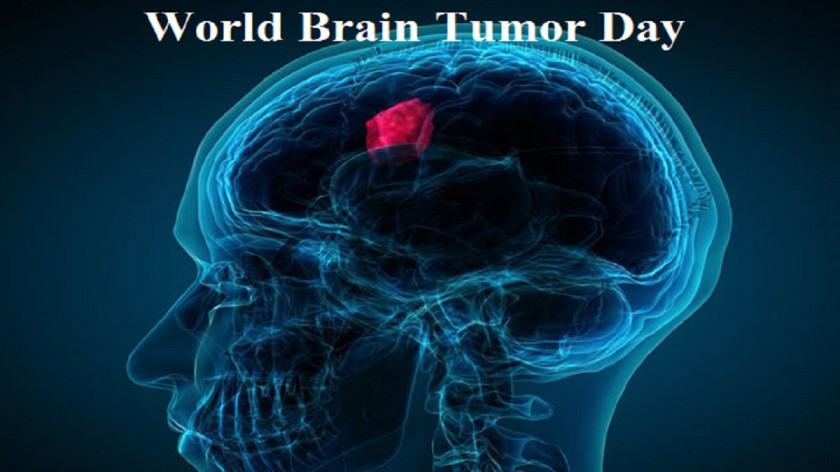World Brain Tumor Day 2023: A brain tumor is a massive growth of abnormal cells in the brain. There are different types of brain tumors. Some are not cancerous and some are cancerous. It can start in the brain, or cancer can start in other parts of the body and then spread to the brain as a secondary brain tumor.
World Brain Tumor Day is celebrated on June 8 to spread awareness and educate people about brain tumors. There are many myths and misconceptions about brain tumors. Check out some of the day’s facts, history, and significance below.
The brain is the power of the body. The theme of this year’s event is “Protect yourself – stay away from stress.” This year’s theme focuses on developing attention to different types of stress and developing stress management habits to protect yourself from stress. protect the brain from different types of tumors. The key to surviving brain tumors is awareness, early detection, prompt treatment, and appropriate treatment follow-up.
The German Brain Tumor Association (Deutsche Hirntumorhilfe eV), a non-profit organization, first organized this day in 2000 to spread awareness about brain tumors among the public. Deutsche Hirntumorhilfe was founded in 1998 and has over 500 registered members from 14 countries. In addition to scientists and medical professionals, it provides support to patients and their family members.
History of World Brain Tumor Day
In 2000, Deutsche Hirntumorhilfe declared World Brain Tumor Day an international celebration. World Brain Tumor Day is now celebrated every year on June 8 as a tribute to all brain tumor patients and their families.
Meaning of World Brain Tumor Day
The significance of World Brain Tumor Day is to shed light on the impact of brain tumors on individuals and society as a whole.
Brain tumors can affect people of all ages and can have serious consequences for cognitive and physical as well as emotional function.
Through World Brain Tumor Day, individuals and organizations can unite, spread awareness and educate people about this life-threatening disease. Furthermore, this day provides an opportunity to provide support to those affected.
On World Brain Tumor Day, many activities are organized to spread awareness, such as public lectures, seminars, fundraisers and social media campaigns.
These initiatives aim to improve understanding of brain tumours, highlight the challenges faced by patients and their families, and emphasize the importance of early detection, diagnosis and treatment. correct and effective treatment options.
What is a brain tumor?
Before understanding what a brain tumor is, let’s first learn something about tumours. A tumor is basically a tumor or abnormal growth of cells.
There are two main types of tumors in the body
• Light
• Malignant
If the cells in the tumor are normal, it is a benign tumor (this means something has gone wrong and the cells have grown to form a tumor). If the cells are abnormal and start to grow uncontrollably, they are cancer cells and melanoma. A brain tumor occurs when abnormal cells form in any part of the brain. A tumor can be benign (non-cancerous) or malignant (cancerous).
Causes of brain cancer:
No specific cause of brain tumor is known. Many doctors believe that long-term exposure to radiation (such as X-rays) can cause brain tumors. Some people also believe that devices like cell phones cause many types of cancer, including brain tumors, however, this fact remains unproven. Many types of research in this area are still ongoing.
Brain tumor symptoms
According to data provided by the National Health Portal (Ministry of Health and Family Welfare, Government of India), depending on the location of the brain tumor, symptoms can vary, some Common symptoms are vision problems, headaches, seizures, vomiting. Mental changes can also be observed. Sometimes a person can also have trouble walking, speaking, and feeling.
Brain tumor diagnosis:
Depending on your symptoms and medical history, doctors may use the following tests to diagnose a brain tumor:
MRI and CT scans: Doctors can use these imaging techniques to diagnose brain tumors.
Angiogram: It is also an imaging technique. In this test, a dye is injected into the bloodstream. If a tumor is present, imaging may show the tumor or the blood vessels that fill the tumor.
Neurological exam: This test includes testing of hearing, alertness, vision, muscle strength, coordination, and reflexes.
Lumbar puncture: In this test, a sample of cerebrospinal fluid is taken with the help of a long thin needle. This technique is called lumbar puncture.
Brain tumor treatment:
Depending on the type, stage, condition, and location of the tumor, doctors may recommend the following treatments:
• Surgery: It is the first step in the treatment of primary benign and malignant brain tumors and is performed on patients to remove as much of the tumor as possible to preserve neurological function.
• Radiation therapy: During this procedure, cells are exposed to high-energy rays of radiation.
• Chemotherapy: In this treatment, anti-cancer drugs are injected into the body to kill cancer cells.
• Steroids: Often used to treat brain tumors.
• Ventricular peritoneal shunt: This procedure is used to drain excess fluid from within the brain.
In a nutshell, a brain tumor is a serious medical condition that can have a serious impact on patients and their families. But there is hope. With early detection and treatment, many people with brain tumors can live long and satisfied lives.
By learning more about brain tumors, we can help raise awareness and dispel myths. People can support and help find new treatments and medications.
Important dates in June 2023: list of national and international dates
Categories: Trends
Source: vcmp.edu.vn
